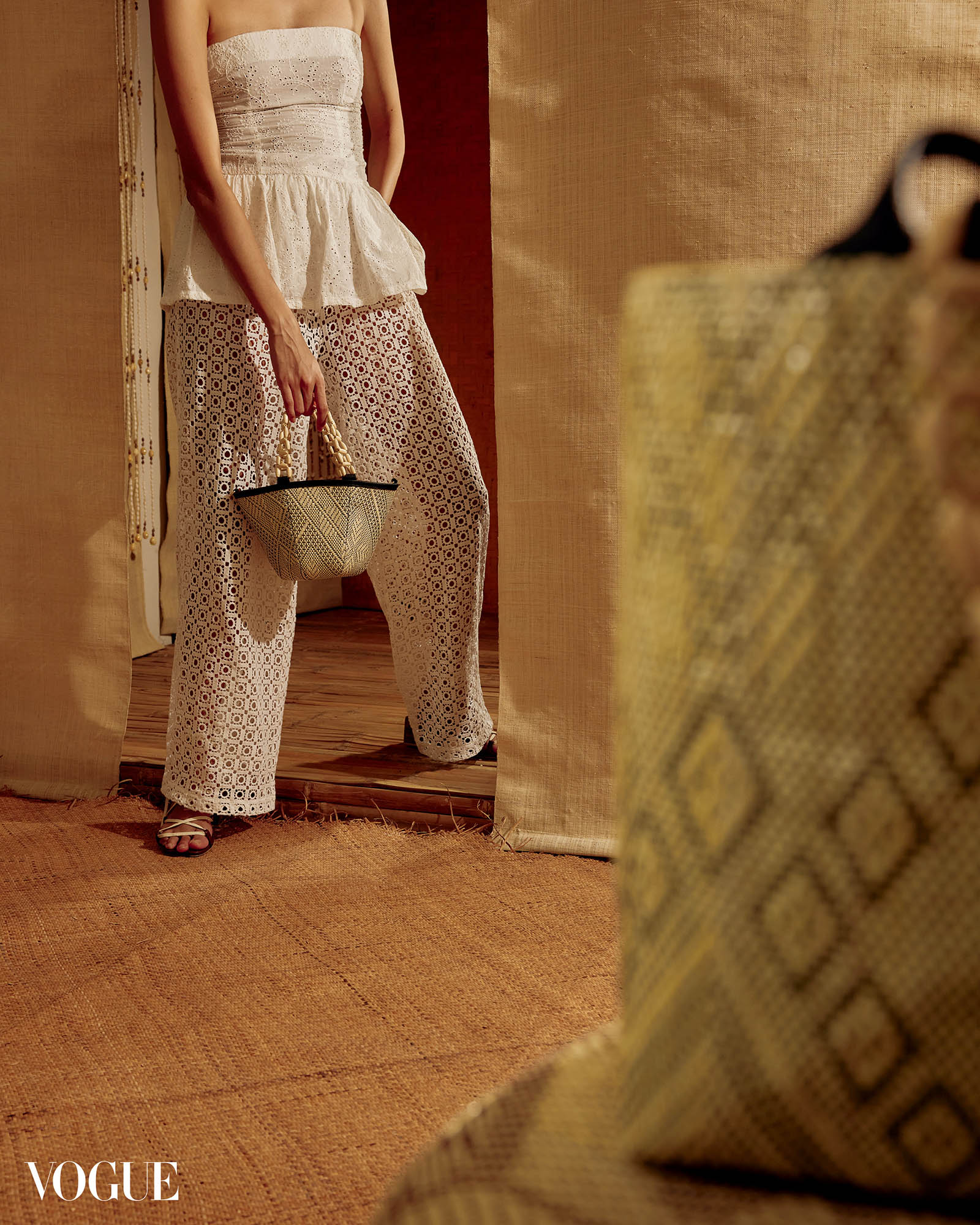Tiny basket bag in brown and Mushroom hat in tan. Photographed by JV Rabano.
The HALOHALO world endures, because it stands on organic ground. Creative director and principal designer CARA MIA LIMJAP tells us the tale of its journey.
Cara Mia Limjap steps out of the pantry, her mischievous eyes and cheeky smile nearly distracting us from what’s in her hands. Once she reaches our team on the other end of the room, she proudly propositions: “Guys, may I offer you some halo-halo?”

In hindsight, the referential dessert shouldn’t have come as a surprise. After all, we were in halohalo’s studio, an enclave that houses the fashion and lifestyle brand Cara built with her brother Rocco Sumabat. Known for their contemporary interpretations of banig (traditional Filipino handwoven mat), halohalo offers bags, homeware, and accessories in festive candy-colored weaves. With air conditioners, light fixtures, and the entire comfort room wrapped in the material, the studio is a world of its own. The chilled dessert, random as it seemed, was not at all out of place. It felt natural to the setting; a sentiment that frequently rings true when it comes to Halohalo.
“Almost everything was organic,” the designer says of the brand’s inception. Back home from a Parsons fashion marketing course in New York, Cara spent her summer playing with banig, which she was exposed to early in her youth. “I can’t remember if it was grade school or high school. I was just always fixated on it, then I didn’t really know what exactly I wanted to do with it. But it stayed in my head for a really long time.”
A year prior in 2012, Cara’s sights were set on leather, an obsession that manifested into the brand Wabi Sabi. She founded the latter while, when she was under House of Laurel’s production and creative department, she happened to come across a supplier. “It was really supposed to be just an experiment. I guess maybe like a relief from what I was doing at work because it was different,” she says.
She later established halohalo in 2013 as a personal project, intending for it to feature one staple collection as opposed to Wabi Sabi’s steady stream of custom orders from returning clients. Somewhere between racking up long lines at local fairs like ArteFino and Manila FAME, Halohalo successfully found its crowd, and running two separate businesses at once eventually cramped Cara’s headspace.


After merging the two in 2017, halohalo’s recycled plastic weaves came to be paired with genuine and vegetable leather straps. Then came the expansion to homeware with placemats, cushions, and ottomans, furniture that, at one point, figured on the background of many a stylish #stayathome Instagram post. The brand’s most recent venture is GoodTimes, their foray into clothing that Cara describes as “a bridge between an endless summer and holiday.”
All products under Halohalo’s umbrella are made in the Philippines by a small group of artisans. “We’ve been with the people we’ve started with,” Cara reveals, “it doesn’t really change much, more of just adding to the team.”
That Cara’s design philosophy takes on the same pattern is inevitable. The product offerings for all Halohalo’s lines are seasonless staples, because the designer enjoys the gestation of an idea. “When I get fixated,” she says, “when I let the ideas fall, it just doesn’t stop.” At night, she has a habit of trading sleep for hours of turning over an idea in her head. “I guess I had good training for all of that before,” she teases, referencing evenings in grade school spent mulling over things she wished to design or redesign, like other people’s houses she’d visited.
“I was always curious about, I guess, products. Somehow I was into design, but not really. I couldn’t pinpoint it. I guessI just had an interest in aesthetics… as broad as that can be.” Cara’s horizons further widened at fashion houses like House of Laurel, Tibi, Rachel Comey, and Proenza Schouler, and Philippine retailer H&F Retail Concepts Inc. Curiously, helming her own brand wasn’t in the picture—she would’ve been content at the periphery of creativity. “I knew that I wanted to work for a company of some sort that was in the creatives, but I wouldn’t necessarily have to be the creative person,” she reveals. “I just wanted to be around that creativity.”
